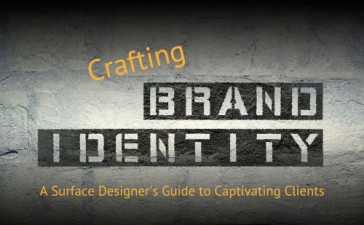In the vibrant world of art and design, the journey from a creative vision to an established brand is both exhilarating and challenging. As creatives, we often start with a grand vision of how we want our brand to look and feel. This initial spark is crucial, serving as a guiding light for our artistic endeavors. However, the path from vision to brand recognition is rarely linear, and understanding when you’ve truly established a brand can be elusive.
At its core, a brand is more than just a logo or a style guide. It’s the emotional and intellectual response your work evokes in your audience. According to ArtSHINE’s perspective:
“A true brand is born when your vision is recognized, your message resonates, and your creation is loved. It’s not just about being seen, but being felt and embraced by those who share your passion.”~ArtSHINE
This simple yet profound statement encapsulates the essence of brand building. Recognition is the key indicator that your creative efforts have coalesced into something more significant – a brand that resonates with people.
But how do you get there? It starts with that initial vision, certainly. Having a clear idea of what you want your brand to represent is crucial. However, it’s equally important to develop a mission – a roadmap that guides you towards realizing that vision. Your mission is the practical, day-to-day embodiment of your brand’s values and goals. It’s what keeps you focused and moving forward, even when the path seems unclear.
As you progress in your creative journey, it’s natural for your art and design practice to evolve. Your skills improve, your perspectives shift, and your work matures. This evolution is not just normal; it’s desirable. It shows growth and adaptation. However, it’s during this process of growth that many creatives face a crucial challenge: maintaining the essence of their brand while allowing it to evolve.
This is where the importance of regularly reviewing your brand vision comes into play. Periodic assessments allow you to ensure that your current work and brand presence still align with your original vision. It’s a delicate balance – you want to grow and adapt without losing the core essence that makes your brand unique.
Take, for example, the iconic fashion brand Gucci. Founded in 1921 as a luxury leather goods company, Gucci has undergone numerous transformations over the decades. Under the creative direction of Alessandro Michele (2015 -2022), the brand embraced a more eclectic, gender-fluid aesthetic. This shift was a significant departure from its traditional image, yet it was hugely successful because it responded to changing cultural attitudes while maintaining the brand’s core values of luxury and quality. Gucci listened to its audience, particularly younger consumers, and aligned its brand vision with their evolving tastes and values.
Another excellent example is Apple. While known primarily for its technology products, Apple’s brand has always been about more than just computers or phones. It’s about innovation, simplicity, and user experience. As consumer needs and technologies have changed, Apple has continuously evolved its product line and brand messaging. Yet, it has maintained its core identity of sleek design and user-friendly innovation. Apple’s success lies in its ability to listen to its customers’ needs and desires while staying true to its fundamental brand vision.
These examples highlight a crucial aspect of brand building: the importance of listening to your audience. A successful brand is not created in isolation. It’s a dialogue between the creator and the audience. Your followers, clients, and potential customers provide invaluable feedback that can help shape and refine your brand. This doesn’t mean compromising your artistic integrity or vision. Rather, it’s about finding the sweet spot where your creative vision aligns with what resonates with your audience.
So, how do you know when you’ve truly established a brand? Here are some key indicators:
- Consistent Recognition: People start to recognize your work without needing to see your name or logo. Your style, subject matter, or approach becomes distinctive enough to be identifiable.
- Emotional Connection: Your audience doesn’t just appreciate your work; they feel a connection to it. They associate certain emotions or values with your brand.
- Loyalty and Following: You have a core group of followers or customers who consistently engage with your work and advocate for your brand.
- Market Position: You’ve carved out a unique niche in your field. People know what to expect from your brand and how it differs from others.
- Brand Recall: When people think of a particular style or type of work in your field, your name comes to mind.
- Consistency Across Platforms: Your brand message and visual identity are consistent across various platforms and mediums.
- Influence: Your work starts to influence trends or discussions in your field.
Remember, building a brand is an ongoing process. It requires patience, consistency, and adaptability. Don’t be discouraged if recognition doesn’t come immediately. Keep refining your craft, stay true to your core values, and remain open to feedback and evolution.
As you navigate this journey, avoid the trap of tunnel vision. While it’s important to have a clear brand vision, being overly rigid can limit your growth and ability to connect with your audience. Stay open to new ideas and perspectives. Regularly engage with your audience through social media, events, or direct interactions. Use these opportunities to gather insights and understand how your work is perceived.
In conclusion, knowing when you have a brand is less about reaching a specific milestone and more about recognizing a gradual shift in how your work is perceived and received. It’s when your creative vision, combined with your consistent efforts and audience engagement, results in a recognizable and resonant identity in your field. Keep creating, keep listening, and stay true to your evolving vision. Your brand is not just what you create; it’s the lasting impression you leave on the world through your art and design.
- Find out more
- Launch Pad + Accelerator Expressions of Interest
- Selling and Licensing Your Art & Designs Around the World with ArtSHINE.
- Looking for exciting new Art and Designs to license.
We’re here to help you to take action, just like we’ve helped thousands of other entrepreneurs, business owners, and creative professionals all around the globe.
Now is the time to let your passion SHINE.
Now is the time to Make Tomorrow Today!
To your success, Vinh Van Lam and Stuart Horrex Cofounders ArtSHINE.com





